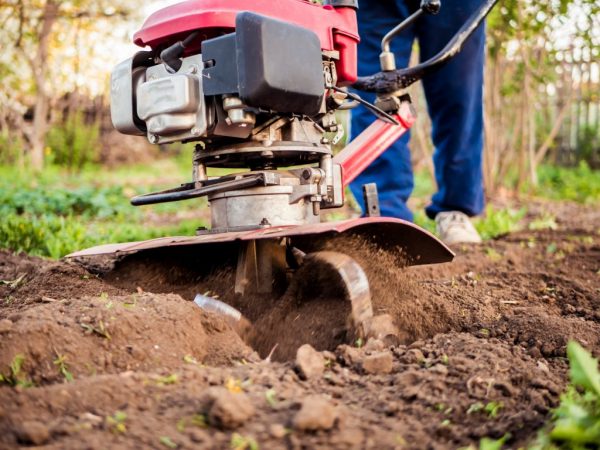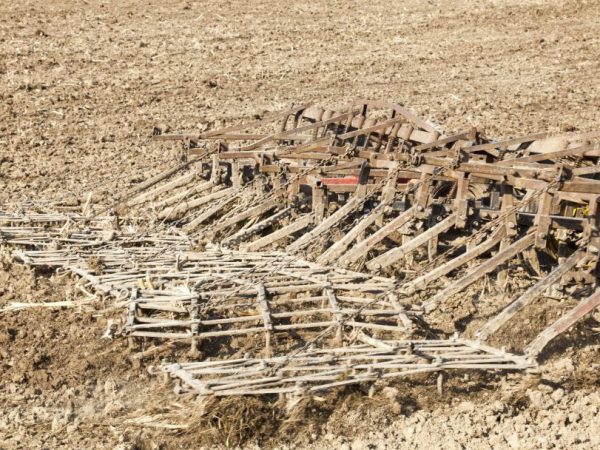Motoblock for weeding potatoes
Growing potatoes consists of planting, hilling and weeding. Weed control is an important step because pests grow much more intensively on prepared soil and take nutrients from crops. Weeding potatoes with a walk-behind tractor allows you to quickly and efficiently rid your garden of weeds.

Motoblock for weeding potatoes
Using a walk-behind tractor
A motor-cultivator is a versatile technique used to perform agricultural operations. Neva is a popular brand among farmers.
The technique is used for:
- weeding of potato rows with a walk-behind tractor;
- plowing the soil;
- planting culture;
- hilling bushes;
- harvesting.
If necessary, the walk-behind tractor is used to combat grass thickets on the site. The unit can be easily modernized for household needs by adding special parts.
Weed control paws
A motor-cultivator for weeding potatoes is equipped with the following paws:
- one-sided;
- bilateral;
- lancet.
Weeding with paws is the most common method due to its simplicity and efficiency. Installation of paws does not require special knowledge and skills. They do not take up much space during storage.
The paws gently act on the soil during processing, without touching the potato root system. When choosing the depth of processing, they are guided by the type of soil. For loose soil, a depth of 3-5 cm is suitable.
Dense soil requires deeper processing, but not too much. The optimal value is 6-8 cm. With deeper processing, the movement of the cultivator becomes difficult.
The tines are attached to the unit with special holders. The width depends on the size of the furrow. The devices are placed with the sharp part towards the center of the row spacing. To prevent the cultivator from getting stuck in the ground, 1-2 paws are placed slightly behind the rest.
The disadvantage of this method is incomplete destruction of weeds: their roots remain in the soil.
Using a flat cutter
Weeding potatoes with a walk-behind tractor with an installed flat cutter removes pests from the upper ball of the soil. The tool is classified as a hinged one and is also used for planting potatoes and hilling. There are 2 types of attachments: with simple knives and weeding drums.
Fly a plane cutter so that the wheels are in the furrow when moving. At this time, the sharp part cuts off the weeds. If a special drum is additionally installed, it swings them to the sides.
The disadvantage is incomplete destruction of pests. Also, flat cutters do not cope well with old plants with a strong root system. They are best used when the weeds are young.
Installing the harrow

The harrow weeds the aisles
The device is a hinged structure that is used when processing row spacings. The harrow belongs to the dragging types of aggregates.
The mesh structure consists of a frame and teeth set on it, which grab weeds and pull them out of the soil by their roots.
Harrow sections are performed in the following form:
- square;
- rectangle;
- hexagon;
- triangle.
The length of each cell is 15-15 cm. It is most effective to arrange the teeth in a checkerboard pattern for a larger processing area. The harrow loosens the soil and weeds the aisles.
Propolnik
A simple device that gardeners often make themselves. It is used for weeding and hilling potato rows. The weeds are uprooted by the weeding operator, which prevents the plant from re-emerging.
The device consists of a metal frame on the base of which the knives are fixed. In the rear part there is a cylindrical drum, the blades of which are made in the form of plates. Its purpose is to throw the plucked weeds aside.
When the walk-behind tractor moves, the knives penetrate deep into the soil to the roots and catch the plants. The rotating drum catches them with its blades and throws them away.
Weeding tools are made with L-shaped cutting tools without a front frame. A solid wall is installed at the ends of the drums.
Weeding hedgehogs
Inter-row cultivation is carried out with a special ripper, which is called a hedgehog. The device is made in the form of several metal rings with different radii. They are located at a small distance from each other, forming together a kind of cone.
Each segment has sharp thorns that are designed to pull out weeds. To increase efficiency, the structure is made paired, but asymmetrical. The parts are positioned at an angle to each other.
Impact of hedgehogs:
- Weed control. The thorns catch the plants and pull them out of the soil along with the roots, while not touching the crop.
- Loosening and furrowing of the soil. The process improves the penetration of air and moisture into the soil.
- Formation of ranks. The landing structure looks neat.
Hedgehogs are used both for weeding potatoes and for hilling. They are suitable for all types of soil and site areas.
The device works on the principle of a rotary harrow. The thorns penetrate the soil, and the rings rotate, thereby pulling the plant out and loosening the soil.
Self-made hedgehogs
For the manufacture of a hedgehog, a metal disc structure is chosen as the basis. Find 3 discs of different sizes. Rings are more effective because they are lighter and less harmful to the soil, but discs are easier to make.
With a paired design, circles with the following diameter are taken:
- 250 mm, 170 mm, 90 mm;
- 280 mm, 190 mm, 100 mm.
The frame is a thick one-inch pipe. The axial dimension of the hedgehog is 25 mm. The distance between the outer circles should not exceed 160 mm. The maximum disc diameter is 340 mm.
The thorns are prepared from a metal rod of medium thickness. The entire structure will need 80-90 pieces. The length of the spike for weeding potatoes is 12-15 cm.
Number of spikes per disc:
- small - 6-8;
- medium - 12-15;
- large - 16-20.
Sometimes several spikes are installed on the axle for additional loosening of the soil. The large circle is placed in the center. The small disc is played first, and the middle disc comes at the end. Discs are attached to the walk-behind tractor with bushings and jumpers.
Metal polygons are also suitable instead of discs. For better rotation, a closed-type ball bearing is installed in the hedgehog.
Conclusion
Weeding potatoes with a walk-behind tractor is an important step. Pests not only worsen the nutrition of the crop, but also impede the development of the root system and spread viral diseases.
To obtain a good harvest, the aisles are regularly processed. It is easier to get rid of young weeds than from strong plants, so it is impossible to delay weeding.


